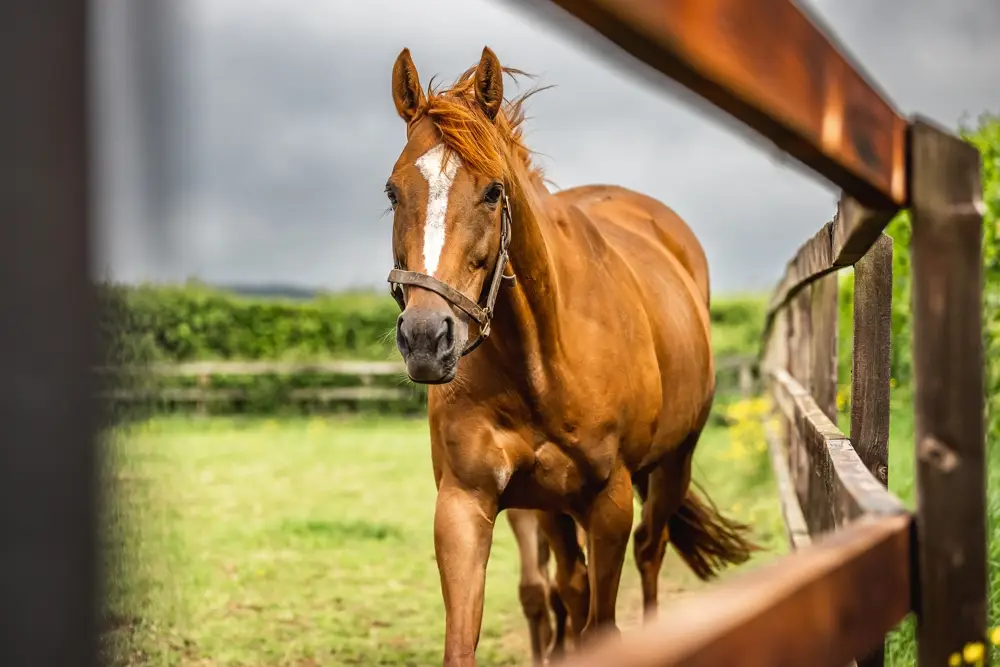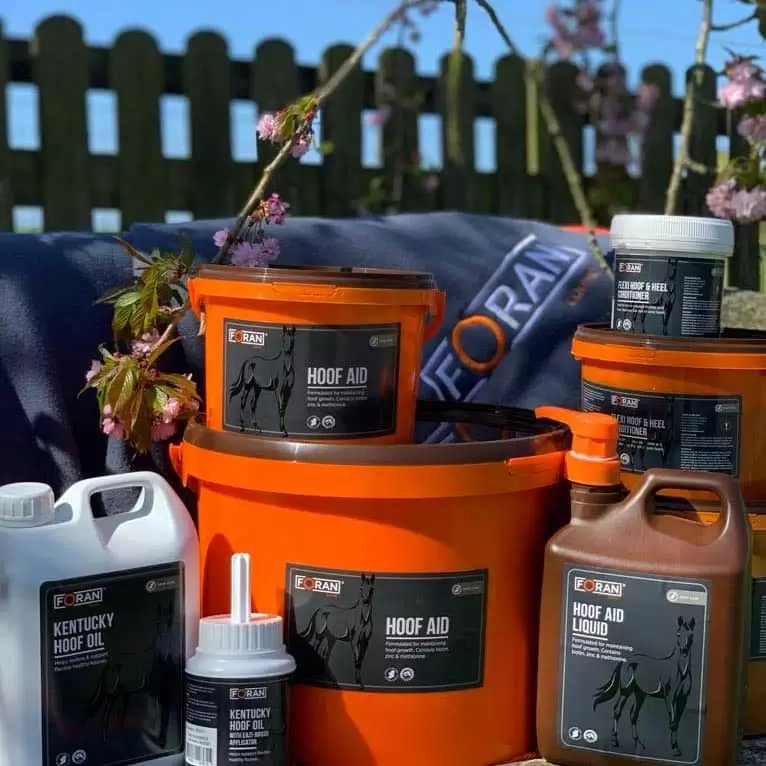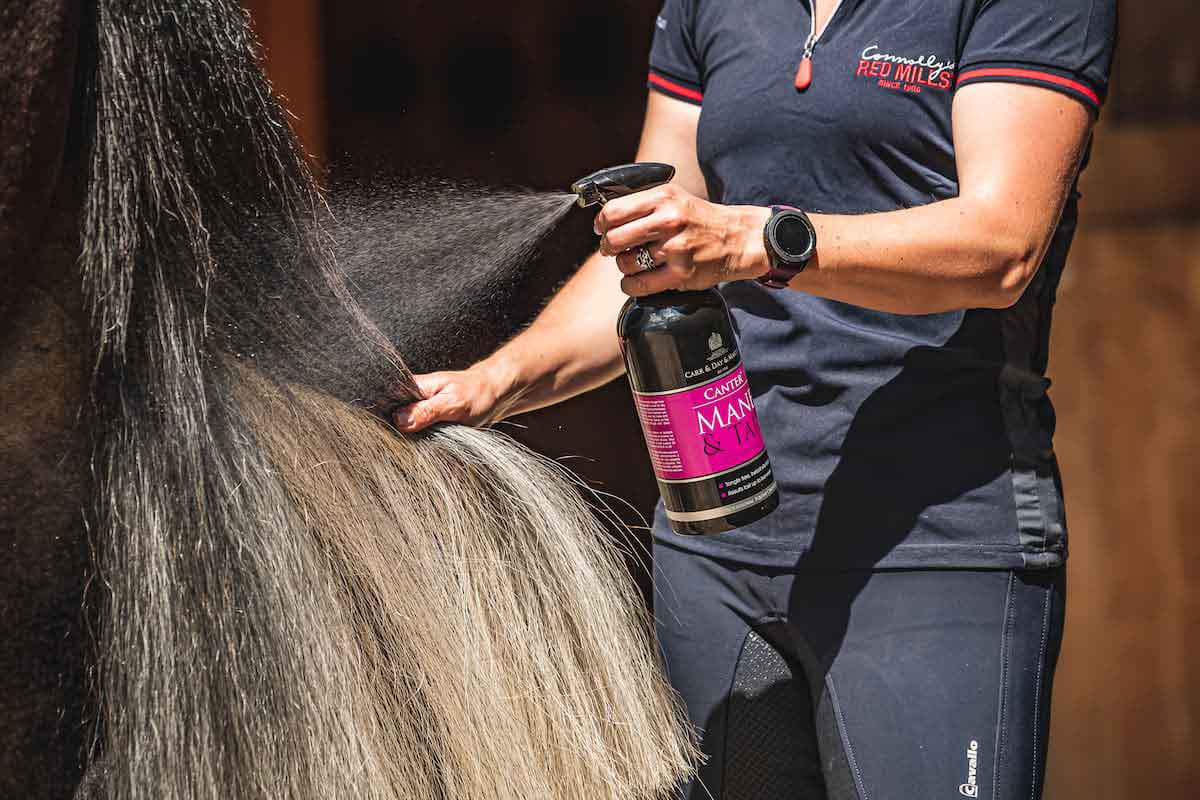While the term “epiphysitis” is regularly used, the more correct term is physitis in foals. Any medical term ending with “–itis” means that it is inflamed. The physis is the scientific term for the growth plate in bones and it is this area that becomes inflamed, hence “phys-itis”.
Physitis is a Development Orthopaedic Disease (DOD) in Foals
Physitis is a developmental orthopaedic disease (DOD) in foals. There are many other diseases included under the umbrella of DOD’s, such as osteochondritis dessicans (OCD), wobbler syndrome and angular limb deformities. These problems may all occur in the same animal, but one does not necessarily lead to the other.
Physitis can affect any breed but is most commonly seen in heavy, fast growing foals such as thoroughbred and certain sport horse breeds. The problem is caused by overloading or compression of the spongier growth plate part of the bone. This primarily causes inflammation but can also lead to alterations in the growth of the bone, which may cause lasting damage.


What Does Physitis in Foals Look Like?
Physitis appears as a hard, warm swelling over the fetlock or knee, at the level of the growth plate of the long bone of the cannon or the forearm. There is usually a pain response when the growth plate/physis area is pressed upon. Sometimes x-rays may be taken to rule out traumatic causes of swelling such as knocks to the joint. The two most common site for physitis are the fetlock area, usually just above and to the inside of the joint, and the knee. The hock may also be involved but this is more unusual
How Do You Prevent Physitis in Foals?
Avoiding physitis is generally a case of providing a balanced diet that contains all the essential nutrients for growth, without causing the foal to become overweight or grow too rapidly. Sounds simple!
In reality, physitis can occur with even the most careful dietary management and stockmanship. There would seem to be an element of genetic predisposition, for example, some horses are more prone to gaining weight than others on exactly the same diet and some may be more sensitive to pressure on the growth plates. Equally, some mares may produce large quantities of often good quality milk, which may cause the foal to grow too rapidly or gain excessive weight. This is particularly problematic for foals reared by foster mares, who are typically selected for for their mothering and milk producing ability.


Getting the Calorie Balance Right for Both the Lactating Mare and Overweight Foal is Tricky
Controlling calorie intake in nursing foals can be particularly difficult and in some instances, depending on the foal’s age, early weaning may be recommended. Limiting the nutrition of mares will have some effect on milk production but her reproductive status must also be considered, for example; is she in foal again? – the next pregnancy should not be compromised! If the mare’s hard feed intake is reduced to significantly less than the recommended level then it will be necessary to ‘top-up’ her micronutrient intake using Connolly’s RED MILLS GroCare Balancer or Foran Equine Chevinal.
Manage Physitis in Foals Through Diet and Rest are the Vital Components
The treatment of physitis relies on two key components: rest and diet restriction. In most cases, drugs are not required, but if the foal is lame then your vet may recommend anti-inflammatory medications to help reduce inflammation of the joints and any associated pain.<
Rest will help to limit active compression on the joints. The amount and extent of rest required will vary from case to case. In some situations your vet may advise complete box-rest, whereas in others limited exercise in a small paddock may be allowed. The amount of rest time needed can also vary considerably from as little as two weeks up to two months. Once a return to free exercise is permitted, this should be introduced carefully and gradually to avoid further injury and you should discuss this with your veterinarian.


Restricted But Balanced Diet for Controlled Growth in Overweight Foals is Essential
The restriction of diet is usually necessary so that the foal reduces its body weight and/ or slows its growth rate. Obviously the foal is still growing, so whilst calorie intake may need to be restricted it is important that the foal continue to receive optimal levels of essential amino acids, vitamins and minerals such as calcium and phosphorus to support normal musculoskeletal growth; do not starve the foal.
Connolly's RED MILLS GroCare Balancer is a Nutrient-Dense Low Calorie Balance suitable for Growing Foals and Youngstock
In most cases, feeding a low calorie, nutrient-dense horse balancer such as Connolly’s RED MILLS GroCare Balancer is ideal for these foals. GroCare Balancer contains our unique Pro Balance vitamin and mineral package to ensure your youngstock receive optimal levels, and the correct ratios of, essential minerals and vitamins such as calcium, phosphorus, copper, vitamins A, D and K. In addition, it is exceptionally low in starch to help limit glyceamic response, which is thought to be a factor in DOD’s in some individuals, and provides a source of protein, rich in essential amino acid such as lysine, to help the bones build a strong framework. Read more about the nutrients required for bone development here


Foran Equine Chevinal is a Great Choice When Hard Feed is Eliminated
Alternatively, if your vet recommends that hard feed is eliminated completely a broad-spectrum multivitamin and mineral supplement for young horses such as Foran Equine Chevinal can be fed. This will provide a virtually calorie free, concentrated source of essential amino acids, vitamins and minerals.
To provide further support youngstock prone to, or suffering from, DOD such as physitis we also recommend feeding Foran Equine Osteo-Glycan. This superior powdered bone supplement for horses contains highly available calcium and phosphorus in the correct ratio for bone health. Chelated copper and zinc, as well as vitamins A and D, are also included to support optimal bone mineralisation.
To Conclude An Equine Joint Supplement for Foals is Another Consideration
Finally, Osteo-Glycan , our equine joint supplement contains marine collagen and clinoptilolite, an organic silica, both of which play essential roles in the formation of bone. Designed to be fed at just 25-30g/ day Osteo-Glycan can be easily mixed into a small amount of feed for foals and youngstock on a restricted diet. Read more about the nutrients required for bone development here








